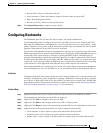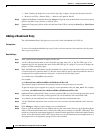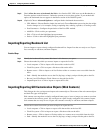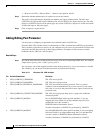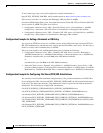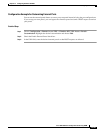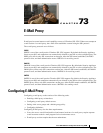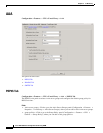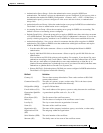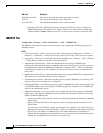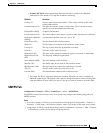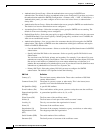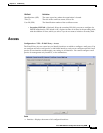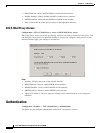
CHAPTER
73-1
Cisco ASA 5500 Series Configuration Guide using ASDM
73
E-Mail Proxy
E-mail proxies extend remote e-mail capability to users of Clientless SSL VPN. When users attempt an
e-mail session via e-mail proxy, the e-mail client establishes a tunnel using the SSL protocol.
The e-mail proxy protocols are as follows:
POP3S
POP3S is one of the e-mail proxies Clientless SSL VPN supports. By default the Security Appliance
listens to port 995, and connections are automatically allowed to port 995 or to the configured port. The
POP3 proxy allows only SSL connections on that port. After the SSL tunnel establishes, the POP3
protocol starts, and then authentication occurs. POP3S is for receiving e-mail.
IMAP4S
IMAP4S is one of the e-mail proxies Clientless SSL VPN supports. By default the Security Appliance
listens to port 993, and connections are automatically allowed to port 993 or to the configured port. The
IMAP4 proxy allows only SSL connections on that port. After the SSL tunnel establishes, the IMAP4
protocol starts, and then authentication occurs. IMAP4S is for receiving e-mail.
SMTPS
SMTPS is one of the e-mail proxies Clientless SSL VPN supports. By default, the Security Appliance
listens to port 988, and connections automatically are allowed to port 988 or to the configured port. The
SMTPS proxy allows only SSL connections on that port. After the SSL tunnel establishes, the SMTPS
protocol starts, and then authentication occurs. SMTPS is for sending e-mail.
Configuring E-Mail Proxy
Configuring e-mail proxy on the consists of the following tasks:
• Enabling e-Mail proxy on interfaces.
• Configuring e-mail proxy default servers.
• Setting AAA server groups and a default group policy.
• Configuring delimiters.
Configuring E-mail proxy also has these requirements:
• Users who access e-mail from both local and remote locations via e-mail proxy require separate
e-mail accounts on their e-mail program for local and remote access.
• E-mail proxy sessions require that the user authenticate.



